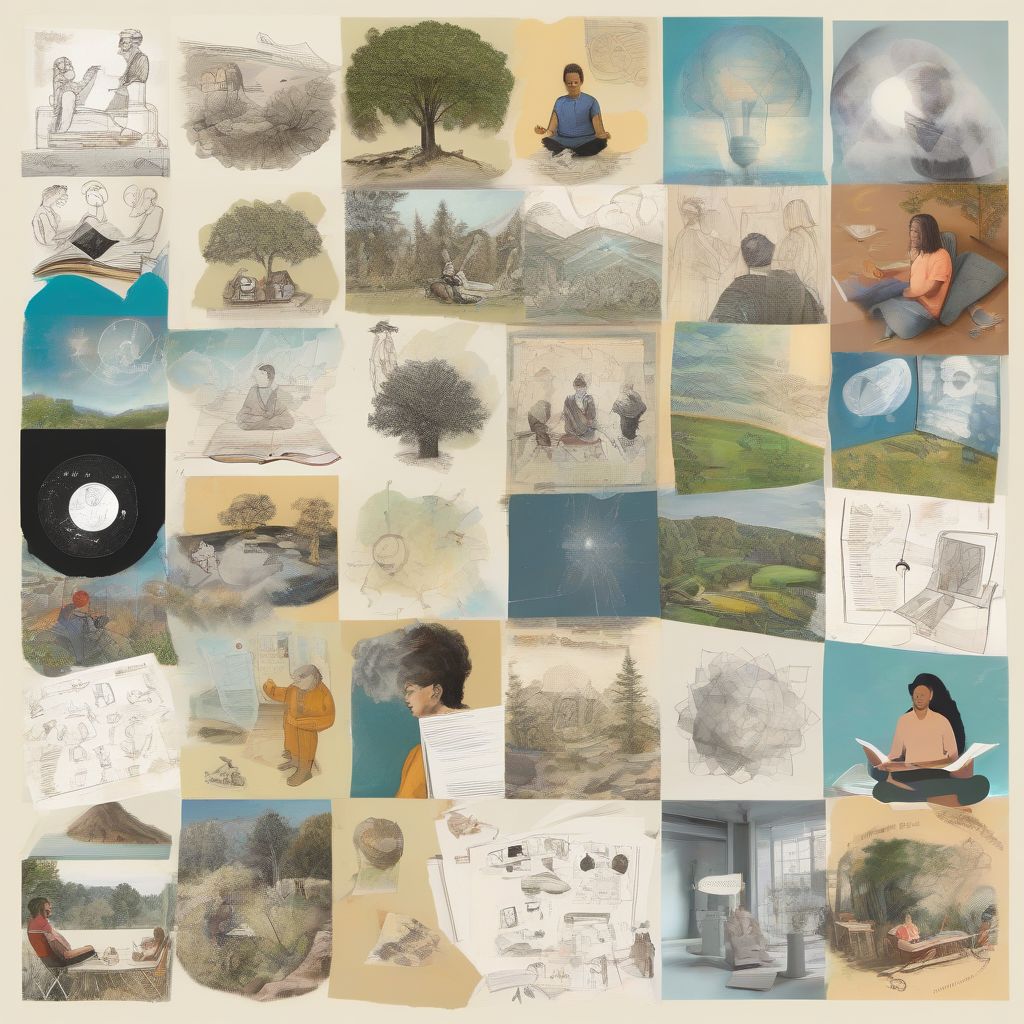Ever wonder what sets apart the truly groundbreaking thinkers and innovators from the rest of us? Is it pure genius, a stroke of luck, or something else entirely? The truth is, while natural talent plays a role, much of their success comes down to cultivated habits. These habits aren’t magical secrets, but rather practices that anyone can adopt to unlock their creative potential and drive innovation. As a nutritionist and meal prep coach, I know the power of habits in transforming health, and the same principle applies to fostering creativity. Let’s dive into the habits that fuel successful creative thinkers and innovators.
Cultivating a Curious Mind
Successful creative thinkers are insatiably curious. They possess a deep desire to understand the world around them and are constantly asking “why?” and “what if?”. This curiosity fuels their exploration of new ideas, perspectives, and possibilities. They are lifelong learners, always seeking out new information and experiences. Think of Leonardo da Vinci, a quintessential Renaissance man whose curiosity spanned art, science, engineering, and anatomy. His relentless pursuit of knowledge fueled his groundbreaking inventions and artistic masterpieces.
Embracing Questions and Challenges
Curiosity naturally leads to questioning the status quo. Creative thinkers don’t accept things at face value. They challenge assumptions, look for alternative explanations, and seek to understand the underlying principles of everything. This questioning mindset allows them to identify problems and opportunities that others might miss.
Actively Seeking New Experiences
Expanding your horizons through new experiences is crucial for cultivating creativity. This could involve traveling to new places, learning a new skill, engaging with different cultures, or simply trying a new restaurant. Each experience provides fresh perspectives and insights that can spark new ideas.
The Power of Observation
Innovation often stems from observing the world with a keen eye. Creative thinkers are attentive to details and patterns, noticing subtle nuances that others overlook. They are also adept at connecting seemingly unrelated concepts, leading to breakthroughs.
Mindful Observation in Daily Life
Practice observing your surroundings with intention. Pay attention to the details of your daily routine, the interactions you have with others, and the environment around you. You might be surprised by the insights you gain.
Analyzing and Connecting Observations
Observation is only the first step. The real power comes from analyzing your observations and connecting them to existing knowledge and experiences. This process can lead to new understandings and innovative solutions.
Embracing Failure and Experimentation
Creative thinkers understand that failure is an integral part of the innovation process. They don’t fear it, but rather embrace it as a learning opportunity. They are willing to experiment, take risks, and iterate on their ideas until they find what works.
Developing a Growth Mindset
A growth mindset is essential for embracing failure. It involves believing that your abilities and intelligence can be developed through dedication and hard work. This mindset allows you to view challenges as opportunities for growth rather than setbacks.
The Importance of Iteration
Innovation is rarely a linear process. It often involves multiple iterations and refinements. Creative thinkers are comfortable with this process and are willing to adapt and adjust their ideas based on feedback and experimentation.
Cultivating Collaboration and Networking
While creativity can be a solitary pursuit, collaboration and networking play a vital role in bringing innovative ideas to fruition. Creative thinkers seek out diverse perspectives and engage in meaningful conversations with others.
The Value of Diverse Perspectives
Surrounding yourself with people from different backgrounds and with different skillsets can broaden your thinking and spark new ideas. Diversity of thought is essential for innovation.
Building a Supportive Network
A supportive network of mentors, colleagues, and friends can provide valuable feedback, encouragement, and resources. Networking can also open doors to new opportunities and collaborations.
Making Time for Reflection and Mindfulness
In our fast-paced world, it’s easy to get caught up in the daily grind and neglect the importance of reflection and mindfulness. However, these practices are crucial for cultivating creativity and fostering innovation.
The Benefits of Reflection
Taking time to reflect on your experiences, ideas, and learnings can help you gain new insights and identify areas for growth. Reflection can also help you connect seemingly disparate ideas and spark new creative solutions.
Practicing Mindfulness
Mindfulness involves paying attention to the present moment without judgment. It can help you reduce stress, improve focus, and enhance your creative thinking abilities. Practices like meditation and mindful breathing can be particularly helpful.
 Creative Thinking Habits
Creative Thinking Habits
- Fletcher, Angus (Author)
- English (Publication Language)
- Creative Thinkering: Putting Your Imagination to Work
- Michalko, Michael (Author)
- Judkins, Rod (Author)
- English (Publication Language)
- Bill Lucas (Author)
- English (Publication Language)
- Michalko, Michael (Author)
- English (Publication Language)
- School of Life, The (Author)
- English (Publication Language)
- Hazenberg, Wimer (Author)
- English (Publication Language)
- Proven Techniques: Each exercise is grounded in research, ensuring you're not just having fun, but also applying proven techniques to enhance your creative thinking.
- Think Different: It's a hub of inspiration and innovation. Each challenge within these pages encourages you to see the world (and yourself) in new, exciting ways.
- Amazon Kindle Edition
- R, DS (Author)
Conclusion
The habits of successful creative thinkers and innovators are not innate gifts, but rather cultivated practices. By embracing curiosity, honing observation skills, accepting failure as a learning opportunity, fostering collaboration, and making time for reflection and mindfulness, you can unlock your creative potential and drive innovation. Remember, creativity is a journey, not a destination. Embrace the process, experiment fearlessly, and never stop learning. What habits will you start cultivating today? Share your thoughts and experiences in the comments below! Let’s learn and grow together.










